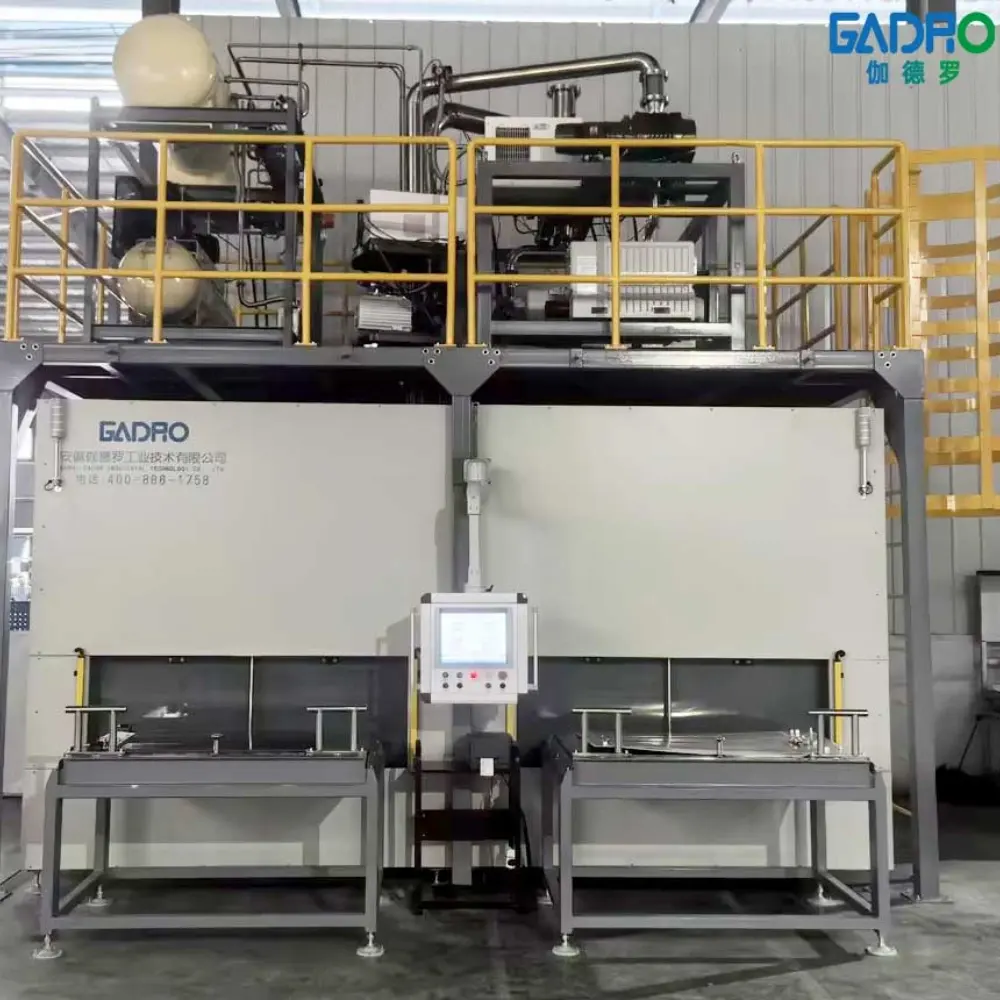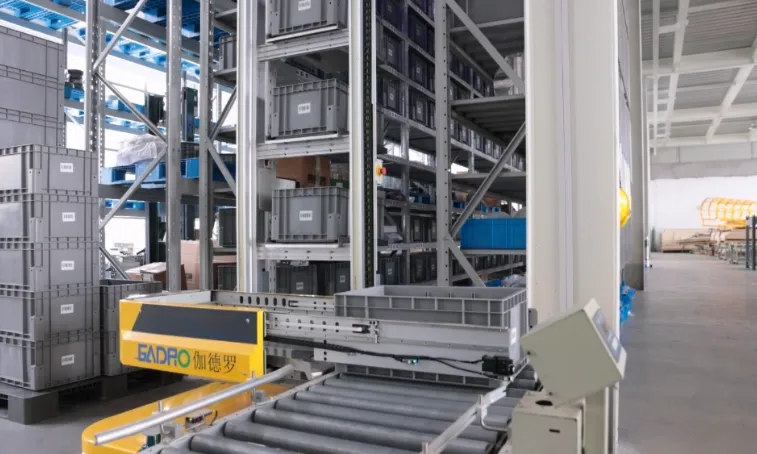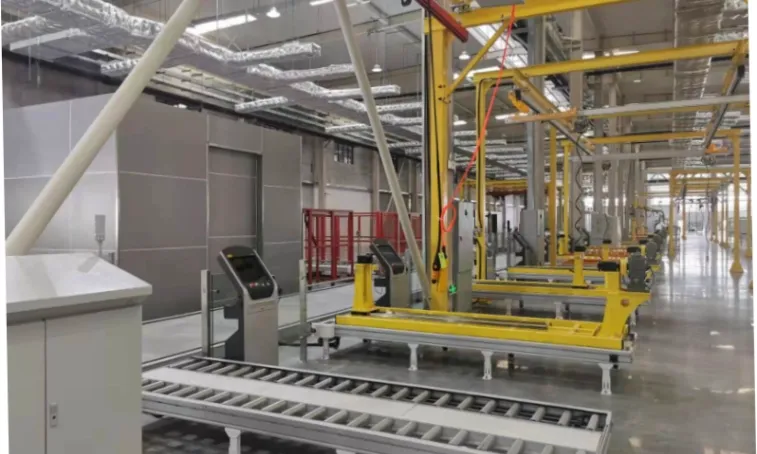يُعدّ استخدام الهيليوم أساسيًا في العديد من التطبيقات الصناعية، لا سيما في المجالات الطبية، وصناعة أشباه الموصلات، والفضاء، وغيرها. ومع ذلك، ولأنه مورد نادر، فإن ارتفاع تكلفته يعني أن أي تسرب قد يؤدي إلى خسائر اقتصادية فادحة. ومع تزايد نقص موارد الهيليوم، أصبحت مراقبة تسرباته والحد منها بفعالية وسيلة مهمة للشركات لتوفير التكاليف.
1. تقليل نفايات الهيليوم وتوفير الموارد
لا تؤدي تسربات الهيليوم إلى خسائر مباشرة في التكاليف فحسب، بل قد تؤثر أيضًا على جداول الإنتاج وجودة المنتج. من خلال إجراء عمليات فحص منتظمة كشف تسرب الهيليوميمكن للشركات تحديد مصدر التسرب وإصلاحه بسرعة، مما يقلل من هدر الهيليوم، وبالتالي يوفر الكثير من الموارد والتكاليف. وخاصةً في المجالات التي تتطلب كشفًا دقيقًا للهيليوم، مثل تصنيع أشباه الموصلات والتصوير الطبي، فإن أي تسرب طفيف سيُكلف مبالغ طائلة.
2. تحسين الكفاءة التشغيلية وتقليل وقت التوقف
يُمكّن كشف تسرب الهيليوم من اكتشاف الأعطال في خطوط الإنتاج أو المعدات في الوقت المناسب، مما يُجنّب تعطل المعدات أو توقفها عن العمل بسبب تسرب الهيليوم. في البيئات الصناعية الحديثة، يُعدّ توقف العمل مُكلفًا للغاية، وغالبًا ما يؤدي إلى تأخير الإنتاج وتأخير تسليم طلبات العملاء، وقد يتطلّب تكاليف إصلاح باهظة. من خلال تطبيق نظام فعّال للكشف عن تسرب الهيليوم، يُمكن للشركات إجراء الإصلاحات في الوقت المناسب قبل أن تتفاقم المشاكل وتؤدي إلى أعطال أكثر خطورة في المعدات، مما يُجنّب الخسائر الاقتصادية الناجمة عن توقف العمل.
3. تقليل تكاليف الصيانة والإصلاح
إن استخدام معدات كشف تسرب الهيليوم الفعّالة يُقلل من تكاليف فحص وصيانة المعدات غير الضرورية. عادةً ما تتطلب طرق كشف التسرب التقليدية عمليات فحص يدوية متكررة، وهو أمر ليس فقط غير فعال، بل يُعرّض أيضًا لفشل عمليات الفحص. أما تقنيات كشف تسرب الهيليوم الحديثة، وخاصةً أنظمة الكشف الآلي القائمة على المستشعرات، فتُوفّر دقة وموثوقية أعلى، وتُقلّل من تكرار العمليات اليدوية، وبالتالي تُوفّر الكثير من تكاليف العمالة والصيانة.
4. تحسين جودة الإنتاج وتقليل إعادة العمل
يلعب الهيليوم دورًا هامًا في العديد من عمليات الإنتاج، وخاصةً في الإنتاج عالي الدقة الذي لا يتطلب تسربًا. في حال عدم اكتشاف تسربات الهيليوم في الوقت المناسب، فقد تُسبب مشاكل في جودة المنتج، بل قد تتطلب إعادة التصنيع والإنتاج. من خلال اكتشاف مشاكل تسرب الهيليوم وحلها في الوقت المناسب، يمكن للشركات ضمان استقرار عملية الإنتاج وجودة المنتجات العالية، وتقليل تكاليف إعادة التصنيع الناتجة عن مشاكل الجودة.
5. تحسين عمر المعدات وإطالة فترة عائد الاستثمار
كفاءة نظام كشف تسرب الهيليوم لا يقتصر دور هذه الحلول على مساعدة الشركات على تقليل الفاقد الفوري للهيليوم فحسب، بل تُطيل أيضًا عمر المعدات من خلال تقليل فقدها وتعطلها. هذا يعني أن الشركات لا تحتاج إلى استبدال المعدات بشكل متكرر، مما يوفر تكلفة شراء المعدات واستبدالها. هذه الميزة طويلة الأمد لتوفير التكاليف تُحسّن بشكل كبير عائد استثمار الشركة.
6. المساعدة في الامتثال البيئي وتجنب الغرامات
مع تزايد صرامة اللوائح البيئية، تفرض العديد من الدول والمناطق متطلبات أعلى لانبعاثات غازات النفايات الصناعية ونفايات الموارد. ولا يقتصر دور كشف تسربات الهيليوم على توفير المال للشركات، بل يُسهم أيضًا في الامتثال للوائح حماية البيئة. فمن خلال تطبيق إجراءات فعّالة للكشف عن التسربات، يُمكن للشركات تجنب الغرامات أو المخاطر القانونية التي قد تواجهها بسبب نفايات الهيليوم، وتقليل الأعباء الاقتصادية غير الضرورية.
لا يقتصر دور كشف تسرب الهيليوم على ضمان سلامة واستقرار عملية الإنتاج فحسب، بل يُعدّ أيضًا أداةً مهمةً للشركات لتوفير التكاليف. فمن خلال تقليل هدر الموارد، وتحسين كفاءة الإنتاج، وخفض تكاليف الصيانة، وتحسين جودة المنتج، وإطالة عمر المعدات، يمكن للشركات خفض نفقات التشغيل بشكل كبير مع تعزيز قدرتها التنافسية. ولذلك، فإن الاستثمار في الوقت المناسب في أنظمة فعالة... أجهزة كشف تسرب الهيليوم إن الحفاظ على الموارد ليس مجرد خطوة ضرورية للشركات لحماية الموارد، بل هو أيضًا المفتاح لتحقيق وفورات في التكاليف على المدى الطويل.




